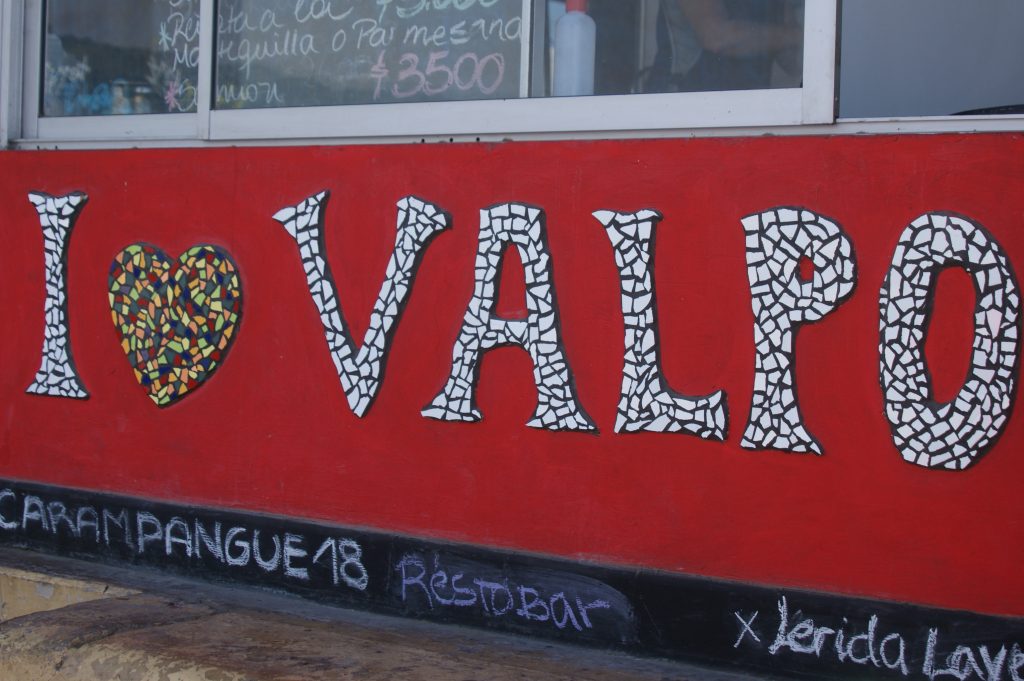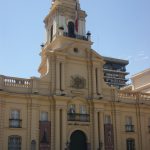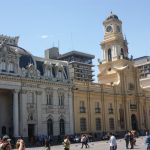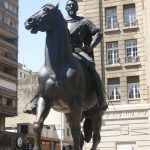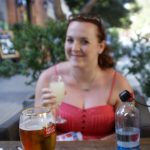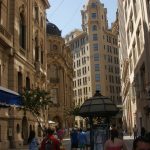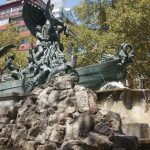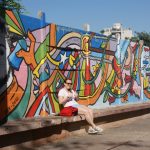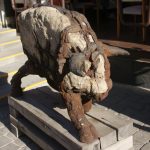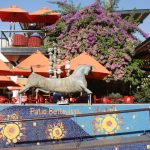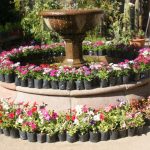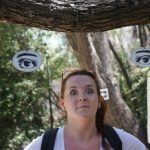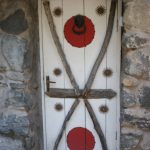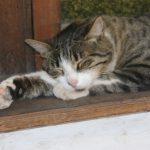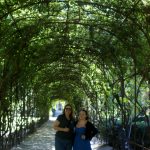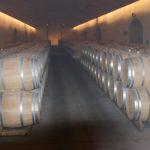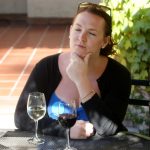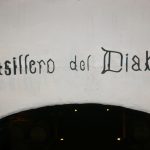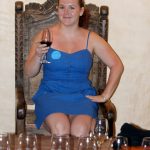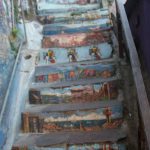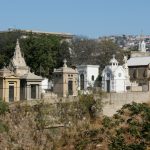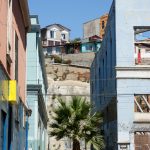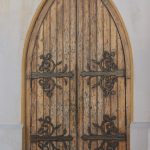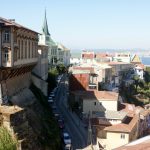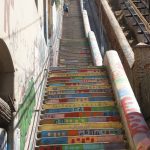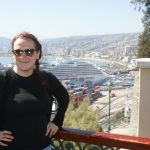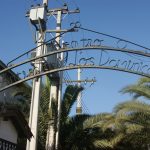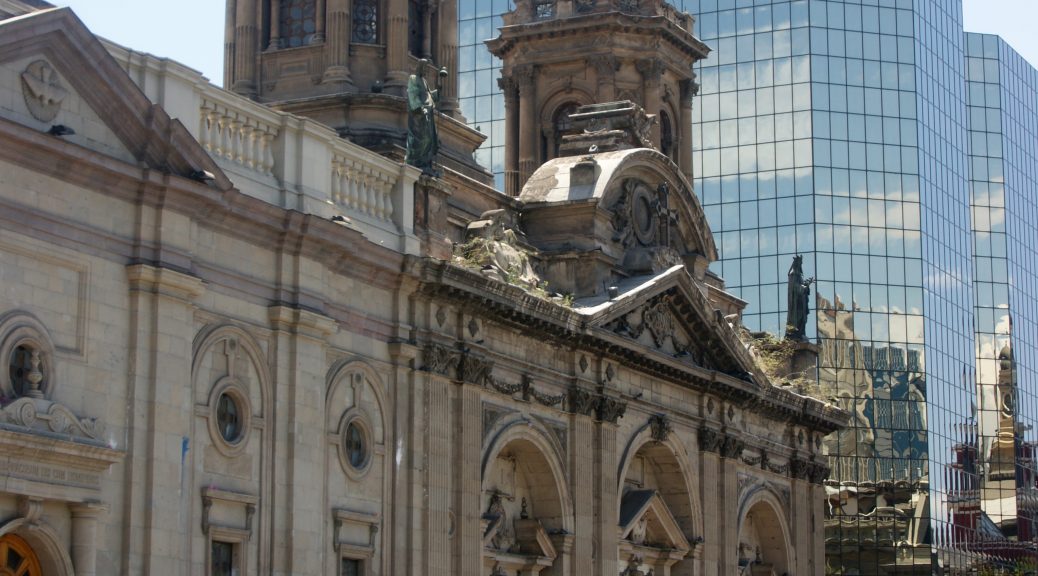
Chile
Santiago
We booked the Antarctica cruise with Quark and decided to extend our trip with a few days in Santiago before heading to Ushuaia. We booked a 3-night Santiago trip through Go-Today, flying in on a direct 10 hour flight from Dallas.
Santiago is a great walking city, lots of murals and interesting architecture. We booked a walking tour with Free Tours; walking tours with a local guide are always a great opportunity for learning a lot about a city in a short time.
The main square, Plaza de Armas, was established in 1541 by Spanish Conquistador Pedro de Valdivia, founder of Santiago. Considered the “soul of the city”, it contains museums, art, the governor’s palace (now the History Museum), and is a great place to people watch. There are artists, restaurants, musicians and vendors filling the plaza.
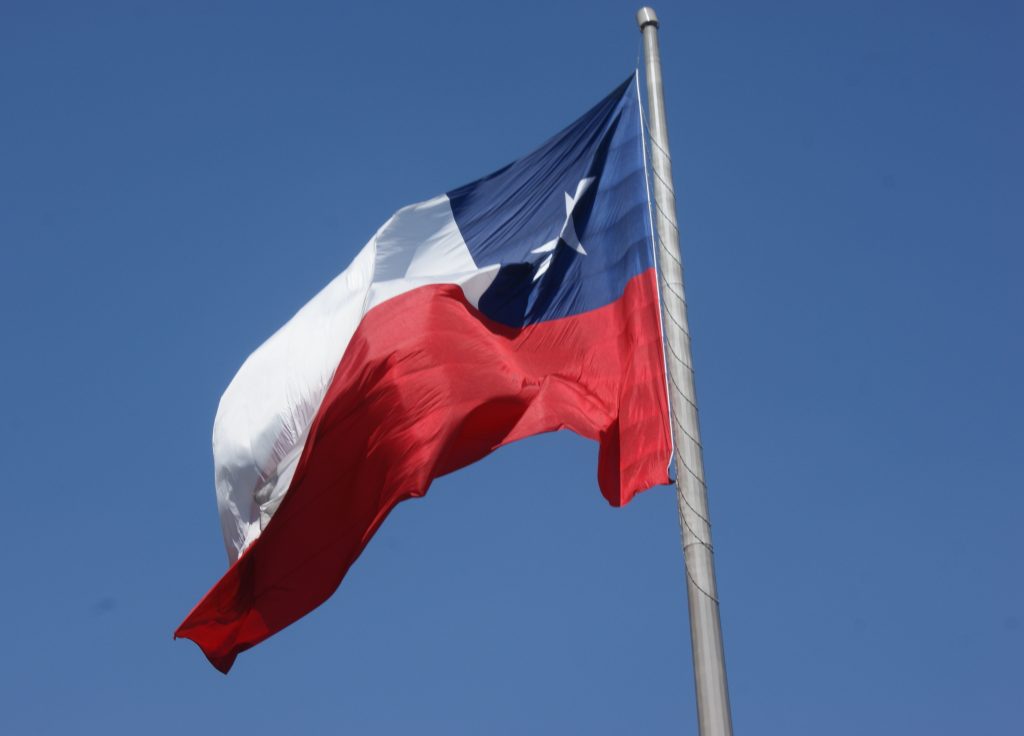
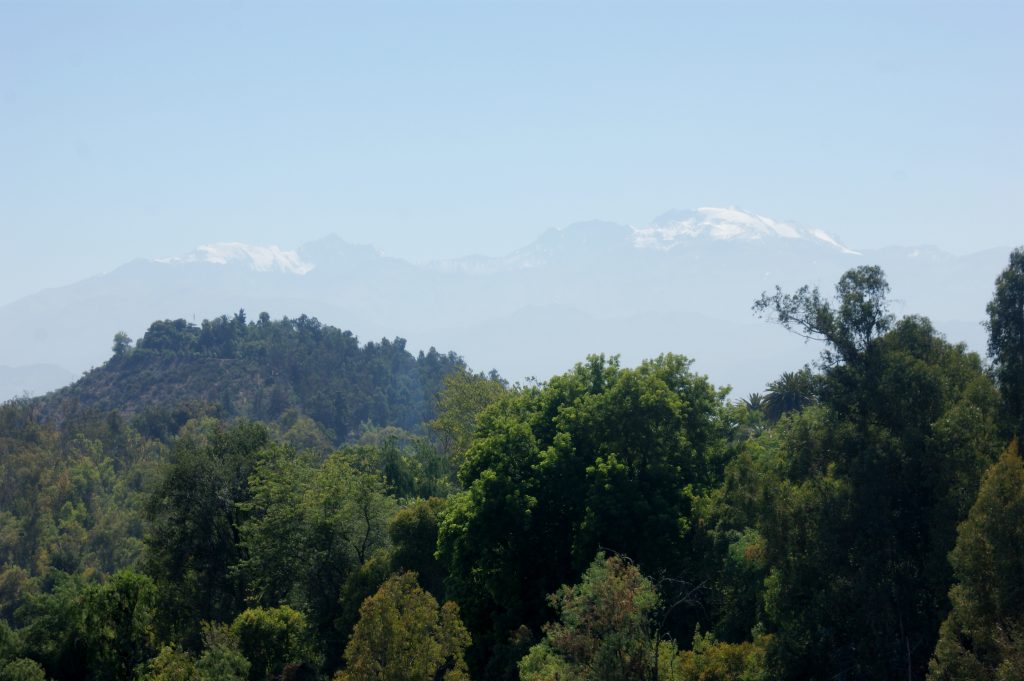
Also on the square is the beautiful Metropolitan Cathedral. It dates to 1541 when Pedro de Valdivia wanted a place of worship built on the main plaza. The first church was destroyed by fire, two other churches were destroyed by earthquakes in 1647 and 1730. The current cathedral was built around 1750. It was updated in the 1780s by Italian architect Joaquín Toesca in a blend of neoclassical and baroque styles. I enjoy visiting churches and architecture in general, much more than Alex who will still wander along with me. I really enjoyed the stained glass windows, the frescos on the ceiling, and amazing marble altar with lapis lazuli. The church is free to enter.
We went to the Museo de la Memoria y Los Derechos Humanos, the Museum of Memory and Human Rights about Pinochet’s reign. Almost exclusively in Spanish they do offer English guided tours. An interesting and powerful history museum and I highly recommend to anyone visiting Santiago.
We visited the Museo de Arte Colonial de San Francisco, a great collection of 17th century colonial art. The museum is located in a former convent and the architecture is as impressive as the exhibits.
We also went to one of three homes of Pablo Neruda in town, La Chascona. Built to look like a ship because of his love of the sea, it has a beautiful courtyard and gardens. His house has an eclectic collection of objects. He traveled frequently and brought home whatever interested him, dolls, pottery, glassware. While I had known Neruda’s name, I hadn’t read any of his poetry until after our visit.
The next day we visited the Concha y Toro (Shell and Bull) Winery for a half day tour. They took us through the vineyards and then the storeroom with its very expensive oak casks. The casks cost over $1000 each and can only be used 2 or 3 times. Many wineries, however, are finding that distilleries and breweries are interested in purchasing the casks for aging their whiskey and beer.
We also visited the Casillero del Diablo or Devil’s Cellar. The legend is that the cellars are protected by the devil himself. He first appeared to thieves who were trying to steal the wine. We were taken to the cellar, the lights turned off, and we saw a video on the legend. Alex leaned over and mentioned a scene in one of the badly written Twilight books that she likes, where tourists were taken to a cellar to be attacked by vampires. It was rather spooky but I wasn’t worried about vampires.
The tour included a visit to their tasting room. We tried their Cabernet Sauvignon/Syrah blend and Carmenere. Chile is the only country where Carmenere grapes are still grown. They were brought over from Spain, originally. Blight killed all the vines in Europe and the varietal was thought to be extinct until vines were rediscovered in Chile. I really enjoyed their wine, and I can find it locally at Binny’s. The Carmenere is one of my new favorites.

We had to make time for Alex to try a “completo” or hot dog with sauerkraut, mashed avocado, chopped tomatoes, and lots of mayo. Hot dogs seem to be very popular here. I ordered one, but with simpler condiments. The completo looked awful.
There are many more museums I would have enjoyed, including the Chilean Museum of Pre-Colombian Art and the Bellavista and San Cristobal neighborhoods if we had more time.
Valparaiso
We saw what we wanted to visit in Santiago in a couple of busy days so headed to Valparaiso on the local bus February, 20. The round-trip bus tickets only cost $8. We left early and had about a 2 hour trip, arriving just after 1000. We took a city bus from the the main bus station. We walked to the port first, enjoying the huge ships and people watching at the very busy area. We went to the funicular to go to Cerro Arrayan, and had great views of the city and also enjoyed an art market. Walking down the hill to the city center we made a brief visit to the huge Naval and Maritime Museum then went to the main plaza, Plaza Sotomayor.
We found a little seafood place for lunch. We had been told there was a free walking tour, like we had taken in Santiago. We met the guide, Erica, at 1500. She was originally from the US, but had come to Valparaiso for school and decided to move here permanently.
We wandered all over the city, up and down the stairs and hills, seeing so many great houses, and colorful decorations and murals. We took another funicular and visited Cerro Concepcion, Cerro Alegre, learned about the history of the city and the impact to their shipping industry when the Panama Canal opened. We all had a free Pisco Sour at the end of the tour. We had purchased round-trip tickets and had to catch the 2000 bus to Santiago. After our walking tour ended around 1800, we headed back to the main bus station, walking instead of a local bus, so we could find a restaurant. We arrived back in Santiago around 2200 and went to our hotel. Valparaiso is a beautiful city, with lots of art to enjoy.
We flew to Ushuaia the next day via Buenos Aires.
** All photos property of Lisa, not to be copied or reproduced **
